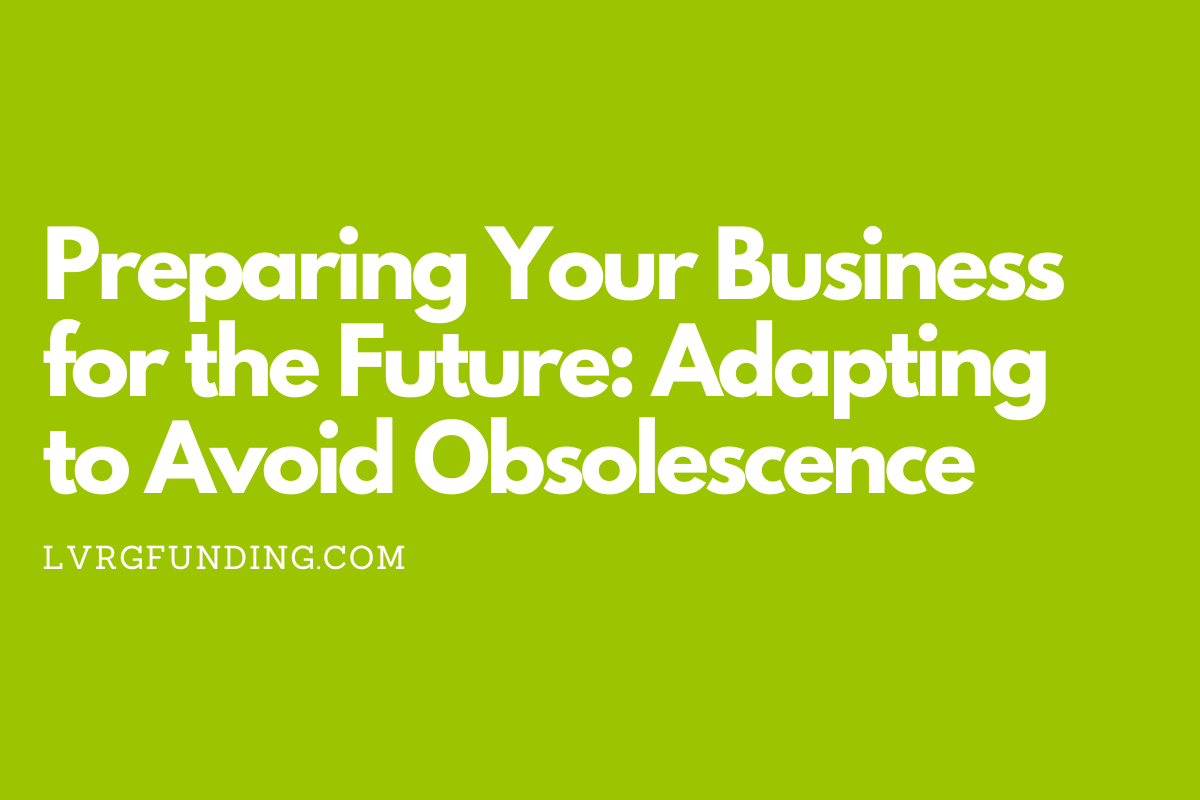Preparing Your Business for the Future: Adapting to Avoid Obsolescence
In today's constantly evolving business landscape, it is crucial to recognize the signs of obsolescence and proactively adapt to stay ahead of the curve. By making the necessary changes and adjustments in your business before it becomes obsolete, you can ensure its long-term success. Here are some key steps to help you future-proof your business:
1. Embrace Technological Advancements
The rapid pace of technological advancement is reshaping industries across the globe. To avoid obsolescence, it is essential to embrace innovative technologies and incorporate them into your business processes. Keep a close eye on emerging trends, such as artificial intelligence, automation, and blockchain, to identify how they could benefit your operations.
2. Stay Connected to Customers
Customers' needs and preferences are continuously changing. To prevent your business from becoming outdated, stay connected with your target audience and actively seek feedback. Regularly analyze market trends, conduct customer surveys, and utilize social listening tools to understand their evolving expectations. This will allow you to adapt your products, services, and user experiences accordingly.
3. Foster a Culture of Continuous Learning
Creating a culture of continuous learning within your organization is vital for remaining relevant. Encourage employees to stay updated on industry developments, attend training programs and workshops, and engage in professional networking. Encourage innovation and experimentation, providing resources and support for research and development efforts.
4. Adapt Your Marketing Strategies
Marketing is an ever-evolving field, with new channels and techniques emerging frequently. Regularly reevaluate and adapt your marketing strategies to optimize your reach and engage with your target market effectively. Explore digital marketing tools, social media platforms, content creation, and personalization to enhance your brand visibility and customer engagement.
5. Prioritize Agility and Flexibility
To avoid obsolescence, it is crucial to be agile and adaptable in your business operations. Be prepared to pivot quickly in response to market trends, technological advancements, and changing customer demands. Streamline processes, create cross-functional teams, and foster a responsive organizational structure that can swiftly adapt to new challenges and opportunities.
6. Foster Innovation and Collaboration
Nurture a culture of innovation by encouraging employees to share ideas, regardless of their position within the company. Facilitate open communication, collaboration, and brainstorming sessions to generate fresh perspectives and breakthrough solutions. Establish partnerships with innovative startups and industry experts to stay at the forefront of new developments.
7. Monitor the Competitive Landscape
Regularly monitor your competition to stay informed about their strategies, offerings, and industry positioning. Analyze their strengths and weaknesses, and identify any potential gaps in the market that you can leverage. By understanding your competitors, you can adapt your business model, products, and services to differentiate yourself and capture a larger market share.
In conclusion, the key to avoiding obsolescence lies in embracing change, fostering innovation, and adapting proactively. By staying connected to customers, embracing technological advancements, and creating a culture of continuous learning, your business will be well-equipped to navigate the challenges of the future. With a commitment to agility, collaboration, and monitoring the competitive landscape, you can position your business for long-term success in an ever-evolving market.
Written by Charles Barr, CEO of LVRG Funding

